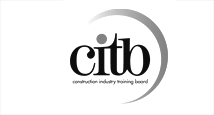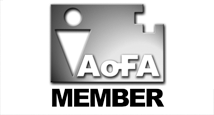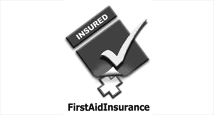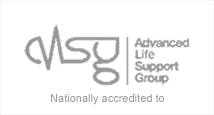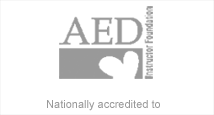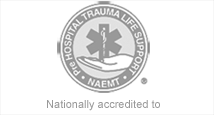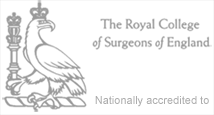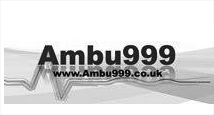News Items
- 05-Feb-2012
"ALSG approved Safe Transfer & Retrieval (STaR) course, Belfast - November 08th & 09th 2012" - 09-Oct-2011
"Survival-linX Solutions on-line Classrom & Education Centre" - 24-Sep-2011
"RIDDOR - Changes to incident reporting" - 12-Mar-2011
"Do you know what to do if a child is choking?" - 12-Mar-2011
"Anaphylaxis - recognition and management" - 12-Mar-2011
"Join use on Facebook - for all the latest discusions, first aid advice and general resuscitation information" - 12-Mar-2011
"Does your Surgery need Life Support (CPR) & Automated Defibrillator (AED) Training?" - 12-Mar-2011
"Resuscitation Council (UK) Emergency Life Support in Schools" - 04-Nov-2010
"2010 Resuscitation Guidelines - Summary of main changes" - 07-Sep-2010
"Do you have a Automated Defibrillator in your place off work?" - 24-Nov-2009
"Survival-linX Solutions gains HSENI certificate of approval to provide first aid at work (FAW) training courses." - 07-Nov-2009
"Risks of pandemic H1N1 2009 influenza (swine influenza) during cardiopulmonary resuscitation (CPR)" - 19-Oct-2008
"Are you thinking of purchasing an Automated External Defibrillator(AED) - essential infomation to assist you when choosing the correct unit." - 09-Aug-2008
"An account of the formation of the foramen ovale and how blood entering the inferior vena cava receives preferential blood streaming in the foetus." - 31-Aug-2007
"Mechanical CPR - Lund University Cardiopulmonary Assist System (LUCAS)" - 02-Jun-2003
"Significant increase in training for Health Care professionals likely to be called to assist children with trachestomy tube difficulties"
Are you thinking of purchasing an Automated External Defibrillator(AED) - essential infomation to assist you when choosing the correct unit.
19-Oct-2008
Buying a defibrillator can be easy if you are familar with the various types on the market. For most purchasers independant advice is difficult to access - The following guide should assist when choosing the correct type of AED for your and you practice.
 The information below provides guidelines under several technical headings and should assist with choosing the correct type of automated external defibrillator (AED) for a particular user group.
The information below provides guidelines under several technical headings and should assist with choosing the correct type of automated external defibrillator (AED) for a particular user group.
KEY TO STATUS INDICATORS
E - Essential, This feature is considered to be an essential component / feature which is appropriate to the specific category of user
R - Recommended, This feature is recommended as being appropriate to the category of user
O - Optional, This feature should be at the discretion of purchaser / user
N - Not Recommended, This feature is considered inappropriate for the category of user
PRE – HOSPITAL CARER CATEGORIES
FR - First Responder, Usually a Volunteer, Voluntary Organisation,Sports clubs, Schools
DP - Dental Practitioner,Dentist, Dental Nurse
GP - Registered Medical Practitioner
A NOMINAL SPECIFICATION NOTE
A1 Easily identifiable as AED
To provide prompt access to AED
GP - E, DP - E, FR - E.
A2 Portable
To facilitate transporting AED to/from various locations
GP - E, DP - E, FR - E.
A3 Wall – mountable with alarm
Visible and accessible where the risk of vandalism or theft is low
GP - O, DP - O, FR - O.
A4 Carrying case appropriate for environment
To protect AED from weather damage
GP - E, DP - E, FR - E.
A5 Instruction manual plus optional CD/DVD
Full user instructions as part of AED training
GP - E, DP - E, FR - E.
A6 Abbreviated operating instructions included on or with AED
Summary user instructions on opening AED
GP - E, DP - E, FR - E.
A7 Push Button operation
Clear, concise and unambiguous procedures
GP - E, DP - E, FR - E.
A8 Automated self test
To check AED readiness for operation
GP - E, DP - E, FR - E.
A9 AED readiness indicator
To confirm at a glance that AED is ready for use
GP - E, DP - E, FR - E.
A10 Visual warning alarm if self test fails
To alert user to rectify AED problem
GP - E, DP - E, FR - E.
A11 Audible warning if self test fails
To alert user to rectify AED problem
GP - E, DP - E, FR - E.
A12 Battery status indictor or low battery alert
To alert user when battery needs to be replaced
GP - E, DP - E, FR - E.
A13 Audio prompts
To ensure user has clear instructions
GP - E, DP - E, FR - E.
A14 Volume adjustable
To facilitate AED use in noisy environment or for users with hearing impairment
GP - O, DP - O, FR - O.
A15 Visual prompts
To activate at a key intervention time
GP - E, DP - E, FR - E.
A16 High resolution screen
Display written instructions to guide user through rescue
GP - R, DP - N, FR - N.
A17 Shock counter display
To display number of shocks delivered
GP - O, DP - O, FR - O.
A18 All cables easy to connect/disconnect from AED, but sufficiently protected from accidental disconnection/ misconnection
Durable cable connection will minimise damage from use
GP - E, DP - E, FR - E.
B TECHNICAL SPECIFICATION NOTE
B1 Operation – automatic
AED can shock a suitable rhythm without user intervention
GP - N, DP - N, FR - N.
B2 Operation – Semi automatic (advisory)
AED will analyse rhythm and prompt user to press ‘shock’ button
GP - E, DP - E, FR - E.
B3 Manual override included
To allow user to switch to ‘manual’ mode to access certain features appropriate to his/her capability and training
GP - O, DP - N, FR - N.
B4 Password for manual override
To ensure that ‘manual’ mode is not accessed inappropriately
GP - O, DP - N, FR - N.
B5 Biphasic technology
Physiologically more appropriate that monophasic technology
GP - E, DP - E, FR - E.
B6 Time from analysis to shock advised < 10 s
To minimise interval between rhythm analysis and shock delivery
GP - E, DP - E, FR - E.
B7 Time from shock advised to armed < 5 s
To minimise interval between rhythm analysis and shock delivery
GP - E, DP - E, FR - E.
B8 Ability to give CPR during analysis (when technology become available)
To allow uninterrupted delivery of CPR during analysis
GP - R, DP - R, FR - R.
B9 Internal memory for event review
To facilitate audit and review of events
GP - R, DP - R, FR - R.
B10 Currently configured for 2005 ILCOR guidelines
To ensure AED programmed to current international guidelines
GP - E, DP - E, FR - E.
B11 Configurable to any future ILCOR Guidelines
To ensure AED will not become obsolete if Guidelines change
GP - E, DP - E, FR - E.
B12 Internal safety discharge (if shock cannot be delivered)
To ensure safe discharge of shock if for any reason the shock is not delivered
GP - E, DP - E, FR - E.
B13 Artefact detection
The effects of pacemaker artefact and electrical interference are minimised
GP - E, DP - E, FR - E.
B14 Automatic analysis prompt
Rhythm analysed without user intervention
GP - E, DP - E, FR - E.
B15 CPR coaching
Prompts user to carry out the correct rate and ratio of CPR
GP - E, DP - E, FR - E.
B16 Child smart pads
To provide energy suitable for children < 8yrs
GP - R, DP - R, FR - R.
B17 Pre connected Pads
Pads are connected to the defibrillator to permit a decrease in risk of error and delivery of shock
GP - R, DP - R, FR - R.
C - BATTERIES
C1 Shelf life prior to installation specified
To allow user to plan replacement battery
GP - E, DP - E, FR - E.
C2 Standby life specified
To allow user to plan replacement battery
GP - E, DP - E, FR - E.
C3 Number of shocks / monitoring minutes delivered from fully charged battery on installation specified
To monitor battery usage and life
GP - E, DP - E, FR - E.
C4 Minimum number of shocks / monitoring minutes delivered after ‘low battery’ warning specified
To monitor battery usage and life
GP - E, DP - E, FR - E.
C5 Battery storage temperature parameters specified
Battery may not operate if stored outside specified temperature parameters
GP - R, DP - R, FR - R.
D1 Disposable battery (battery must be changed if capacity depleted or battery is time expired)
Guarantees delivery of a set number of shocks or monitoring time without risk of battery damage through frequent charging
GP - R, DP - E, FR - E.
D2 Number of shocks delivered from disposable battery specified
To prompt user when battery needs replacing
GP - E, DP - E, FR - E.
D3 Spare disposable battery / batteries
To allow user to replace a used battery
GP - E, DP - E, FR - E.
Register
If you do not have access please register here to access our members section. If you have forgotten your password please click here to reset your password.
Contact Us
| Address | PO Box 1491 Dungannon BT71 5YF |
| Telephone: | 028 8774 6864 |
| Mobile: | 079 7662 1643 |
| Email: | info@survival-linx.com |

